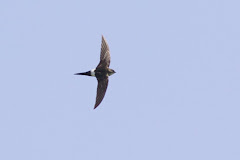It was a lovely day today - lots of sun with a fresh south-easterly breeze - so I decided to put my bike on the train to Store Heddinge and explore the coastal path around Stevns. This is the closest land south-west of Falsterbo, so in early autumn can be great for raptors (and views can be better than Falsterbo as the birds have lost height over the sea). Today there wasn't much chance of many raptors - it's a bit late in the season and the visibility wasn't great (I couldn't see Falsterbo due to a little mist). However, the area is also first landfall for many of the passerines migrating out of Sweden, so there is always the chance of something interesting.
I started at the lighthouse and then walked south to Højerup and back before cycling north to Mandehoved. The trees around the lighthouse have been thinned quite a bit, so there is not so much cover for the hoped for Pallas's Warbler or late Yellow-browed. The whole area was pretty quiet with the exception of a few Redpolls and Siskins that made their way along the clifftop, shortly followed by two Peregrines patrolling the coastline. A group of 5 Yellowhammers was feeding in the stubble and the odd Fieldfare and Blackbird were feeding on the berries (no sign of any Waxwings yet).
The walk south produced a flock of 25 Twite, always nice to see. Their softer, wheezier calls helping to differentiate them from their close relative, the Linnet. I watched this feeding group for around 15 minutes as they fed on the weeds. The group included several frosty adult males sporting nice pink rumps but the majority were females or first-winters. The trees at Højerup produced 5 Goldcrests (they seem to be in much lower numbers this year), a Marsh Tit, 5 Brambling and a Treecreeper in amongst the roving blue and great tit flocks.
Mandehoved produced a new bird for Denmark for me - a 1st winter Kittiwake - ok, a bit of a 'tart's tick' but, nevertheless, very welcome. I guess the fact that it has taken me this long to see a Kittiwake is a function of two things: first, the quality of sea-watching in the Copenhagen area is pretty rubbish; and second the fact that I have hardly put in any hours sea-watching at all in Denmark...
My cycle back to the train station produced 5 Grey Partridges in a stubble field just outside Mandehoved - only the second time I have seen this species here (which is declining fast in Denmark, just like the UK) - and a very dark Red Kite (and yes, it was definitely a Red Kite with a deeply forked tail and five 'fingers').
Photos: first winter Kittiwake at Mandehoved
































